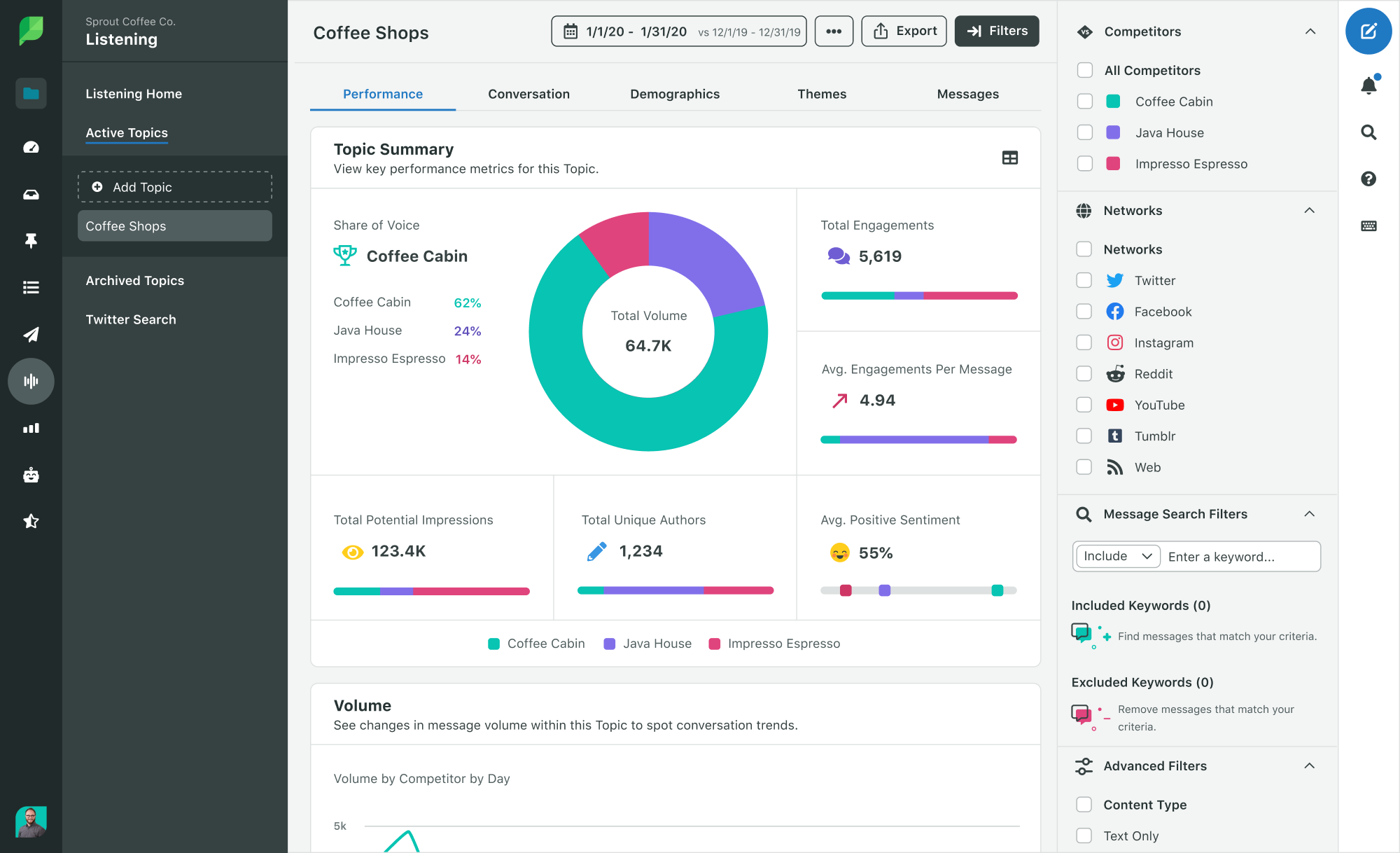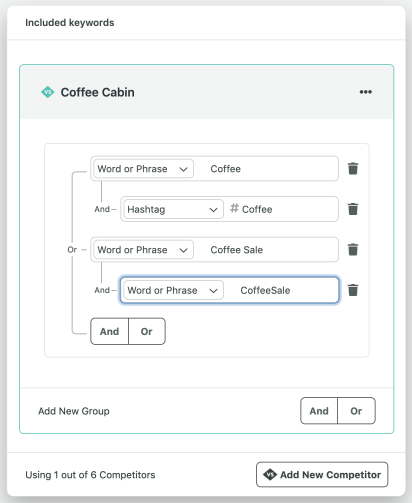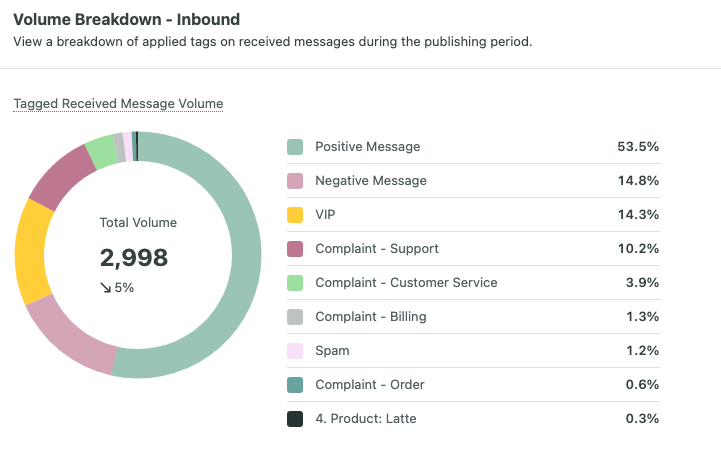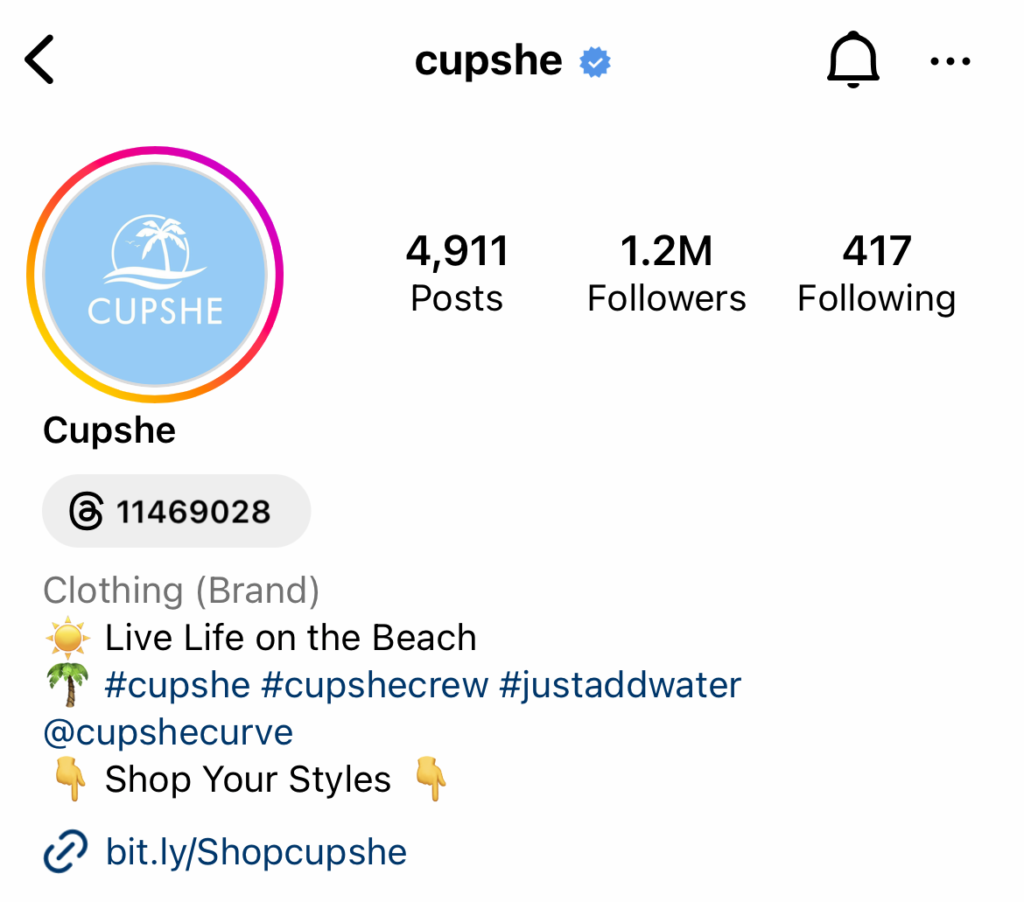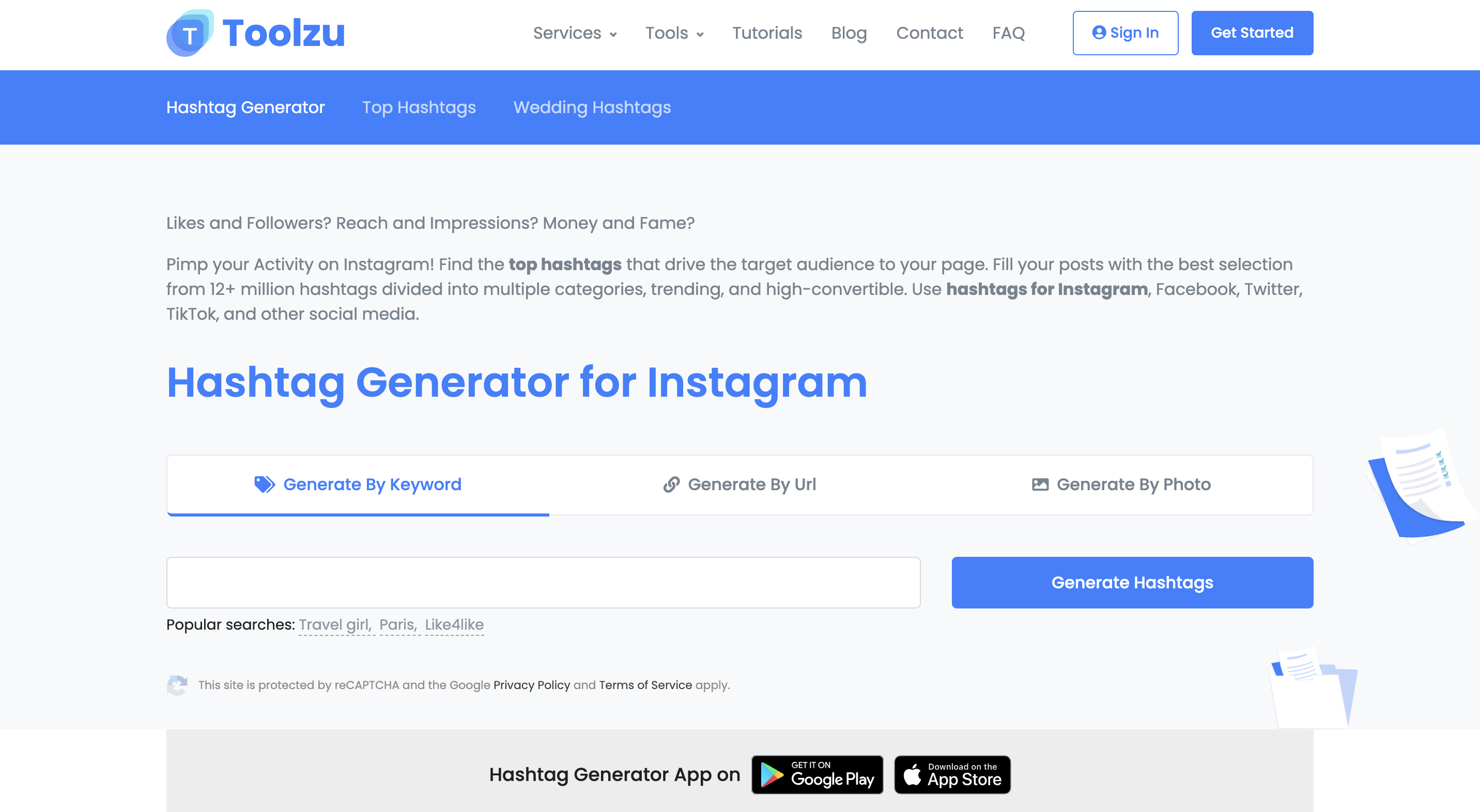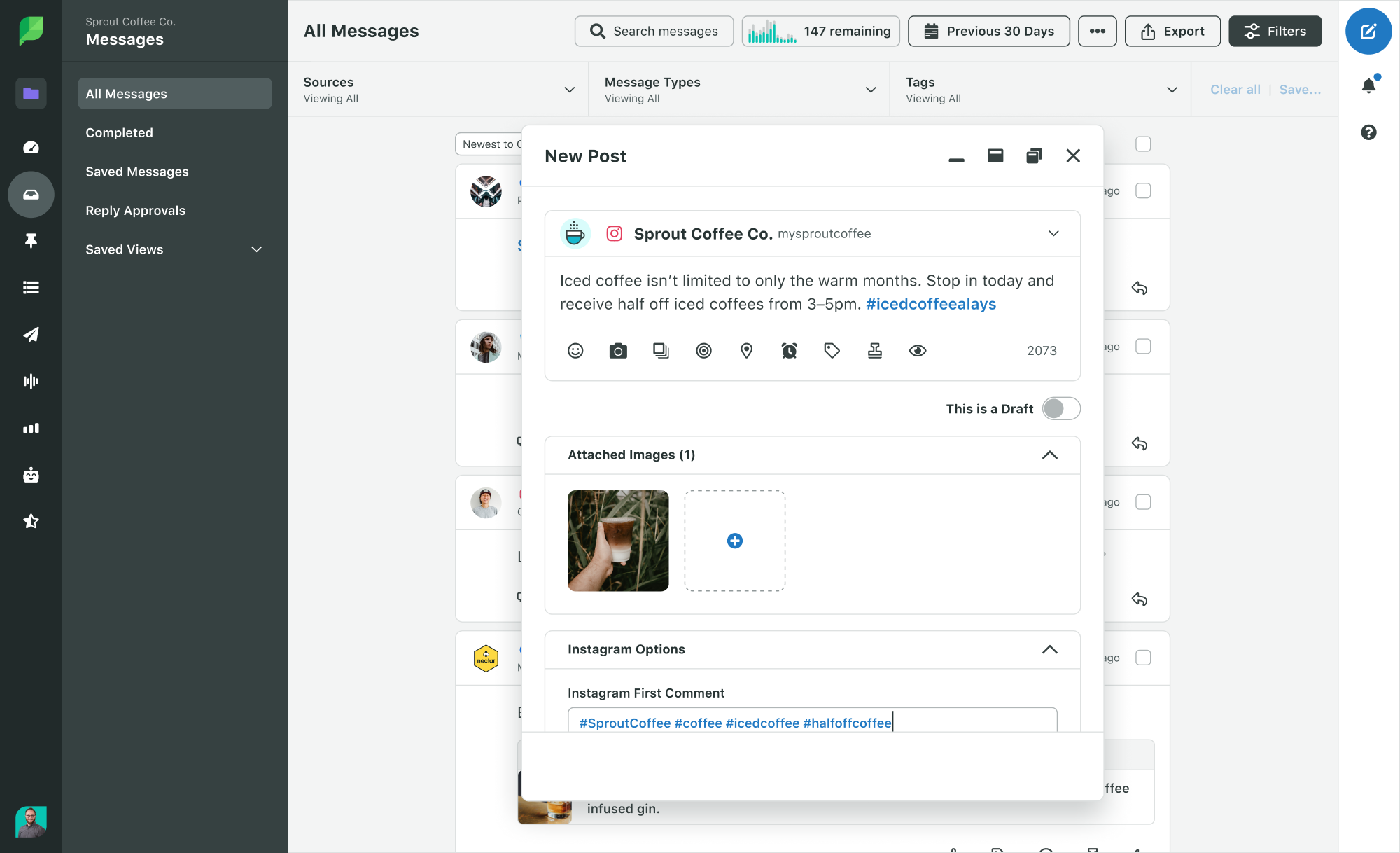
These days, the opportunities for making money online are seemingly endless. One of the most tried-and-true methods for generating an online income, however, is that of monetizing your blog. Whether you’re looking to earn a healthy side income or make a living from blogging, there are plenty of opportunities worth exploring.
So, just how much money can you make as a blogger—and how do you make money blogging, anyway? This comprehensive blog will explain:
Best ways to monetize your blog
Let’s explore the best ways for you to turn your passion for blogging into a highly profitable venture, ranging from advertising and affiliate marketing to monetizing through new channels.
Affiliate marketing
You can turn your passion for blogging into a profitable venture with affiliate marketing. By partnering with relevant brands and incorporating their affiliate links within your content, you can earn a commission for every successful referral or sale made through your blog.
As you can probably imagine, the profits for affiliate marketing can add up very quickly—especially if you have a large reader base.
How can you become a successful affiliate marketer:
1 - Synergy with product or service
The key lies in selecting products or services that align with your blog's niche and resonate with your audience, ensuring that the recommendations you make are genuine and valuable.
For example, if you are a travel blogger you can sign up to be an affiliate marketer for booking.com.
2 - Use keyword research
Be strategic in what you write about. Perform keyword research on topics that have a high monthly search volume and lower keyword difficulty.
For example, as an affiliate marketer for booking.com, you could perform keyword research on ahrefs for “book hotel” limiting the keyword difficulty to anything between 0 - 50.
The results will yield several strong topics like:
- How to book a hotel
- Best way to book a hotel
- How to book hotel
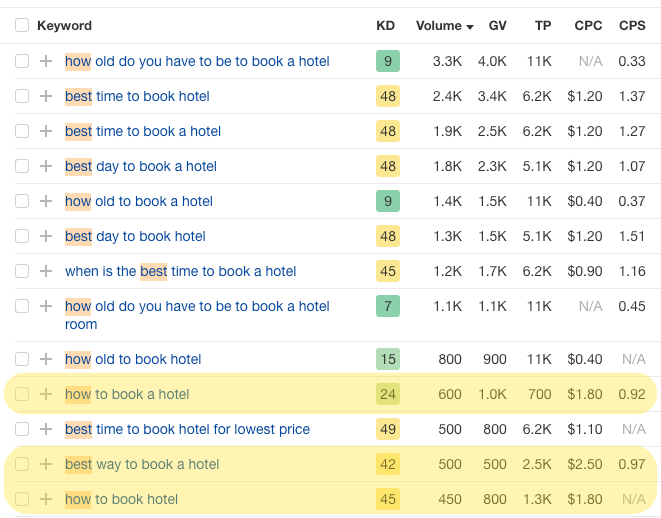
3 - Write a blog about the product service
Write a blog about the product or service and include your affiliate link. Now each time a reader makes a purchase through your affiliate link, you receive a certain percentage of the sale.
For example, based on the keyword research from “book hotel”, you could write a blog about the best ways to book a hotel, listing booking.com as one of the top options.
Advertise on your blog with Google Adsense
Another way to monetize your blog is to incorporate advertisements into your posts; this can be done easily through Google AdSense, which is a program that will automatically insert ad spaces into your blog posts. From there, you will earn money each time your readers view and/or click those ads.
Advertisements can be a significant source of income for many bloggers—especially for those whose blogs receive heavy visitor traffic on a daily basis. After all, the more people you have visiting your blog, the more likely your ads are to be viewed and clicked on.
If you decide to go this route for monetizing your blog, you’ll still need to focus on creating quality and unique content on a regular basis. After all, you’ll need to maintain and grow your reader base in order for these ads to remain a consistent source of income.
For example:
Here’s an example of an ad from Target that was placed on the EatingWell blog using Google AdSense.
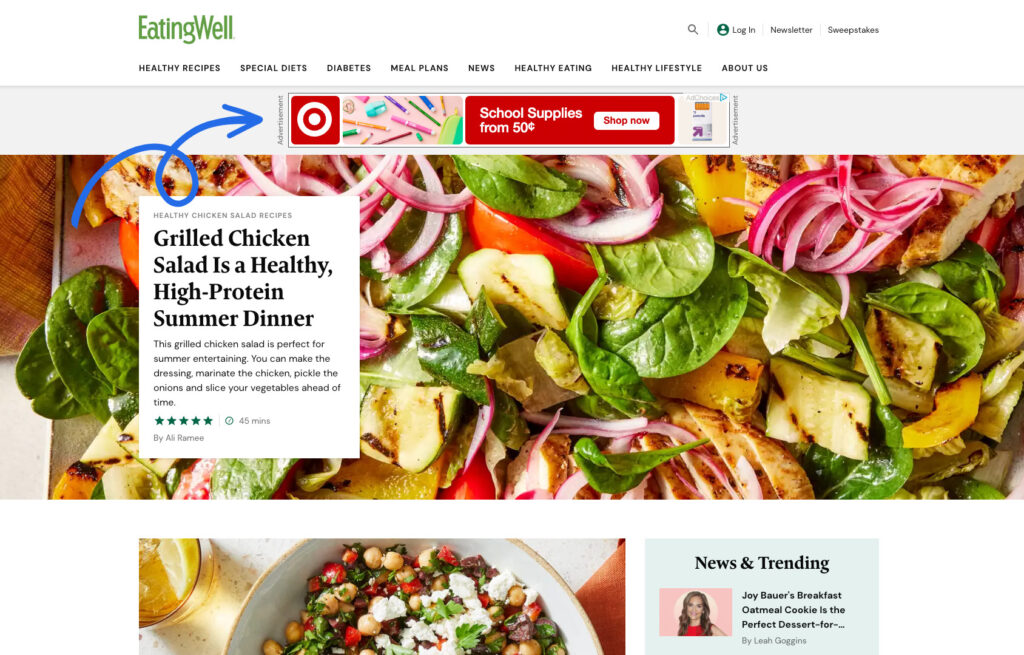
Sell ad space directly
When you allow ads to be placed on your blog using AdSense you lose some control over the type of ads.
However you could always sell ad space directly, this option gives you more control over the ads. Plus you can negotiate customized deals tailored to your target audience. You set your own pricing, terms, and ad formats, allowing for flexibility and creativity in showcasing relevant products or services.
How to sell ad space directly
First thing to do is create a dedicated landing page on your website that lists your available ad spaces, including banner ads, sponsored posts, or product placements. Or you can provide a link to a media kit which includes that information.
It can also help you sell more ad space if you include statistics highlighting your blog's sessions, engagement, and audience demographics to entice potential advertisers.
Then just provide potential advertisers an easy way to contact you.
For example:
Here's a perfect example from Country Rebel. They include some information about them, but the key is they highlight their very impressive social followers and email list size. There’s also a link to their media kit which provides even more information plus an easy way to contact them about advertising opportunities.

Become an influencer
When you consistently produce high-quality, engaging content that resonates with your audience, you build a loyal following and ultimately begin establishing yourself as an authority in their field.
You can expand your reach and reputation as an influencer by guest posting on reputable websites, and attending industry events can help expand your reach and credibility.
Once you’re seen as an influential authority, this will lead to additional revenue streams such as partnerships and other sponsorship opportunities.
For example:
Travel blogger, Matt Kepnes, better known as Nomadic Matt, transformed his passion for travel into a successful blog and brand.
Through his blog, he shares budget travel tips, destination guides, and inspiring stories that have resonated with a global audience.
He has written books, spoken at travel conferences, and become a trusted resource for travelers seeking advice and inspiration.
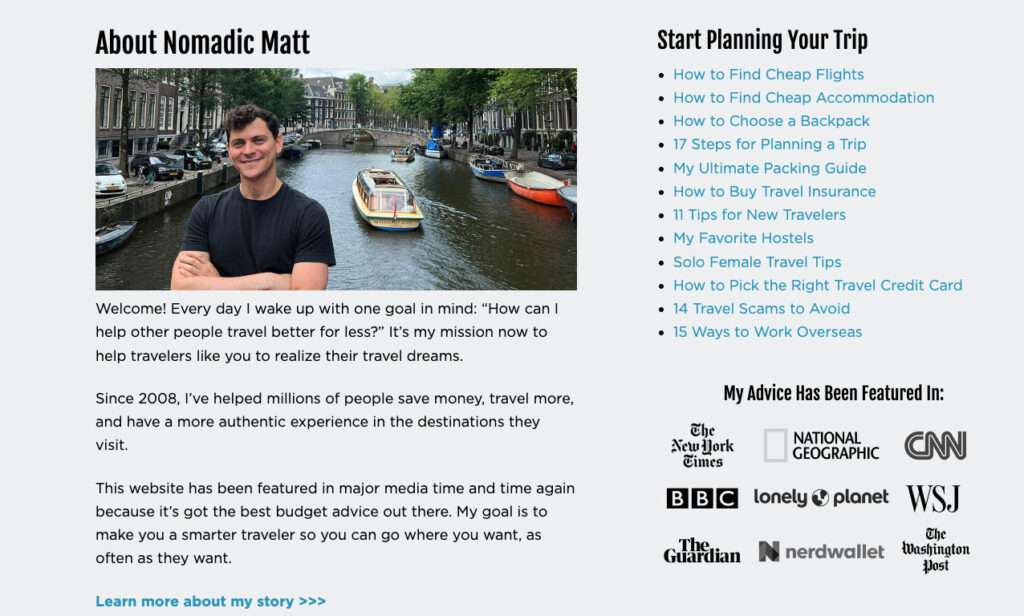
Sell an ebook
There is a huge market for ebooks these days—and you actually don’t need extensive experience to create a profitable ebook. In fact, blog posts often make for excellent content that can be easily repurposed into an ebook.
Consider, for example, bundling several of your most successful blog posts and making them into an eBook that you can sell. There are plenty of great and easy-to-use tools that allow you to put an eBook together without previous experience.
From there, you can simply make your ebook available for purchase on your website or landing page and promote it through other avenues as well. You might even consider submitting your ebook to Amazon Kindle Direct Publishing for added exposure and earning potential.
Offer online courses
Likewise, you can use some of your existing blog content to craft an online course that will interest your readers and teach them a new skill. The nice thing about online courses is that they don’t require much (if any) more work than an ebook to create—yet you can typically sell them for a much higher price point.
The main thing to remember with an online course is that you will probably need to develop and create some supplemental content to go along with your existing blog content. This may include anything from slideshow presentations and videos to infographics, templates, and other supporting material that will appeal to a wide range of learners.
There are tools, such as Teachable and Thinkific, that make turning your blog content into an online course super easy.
Once your course is live, you can promote it through your own website, on social media, and elsewhere to further monetize your blog content.
For example:
At AWeber, we created an online course - 24/7 Email Marketing Masterclass - that we sell to our audience to help them get better email marketing results. Part of this course was created using the expert information found in our blog posts.
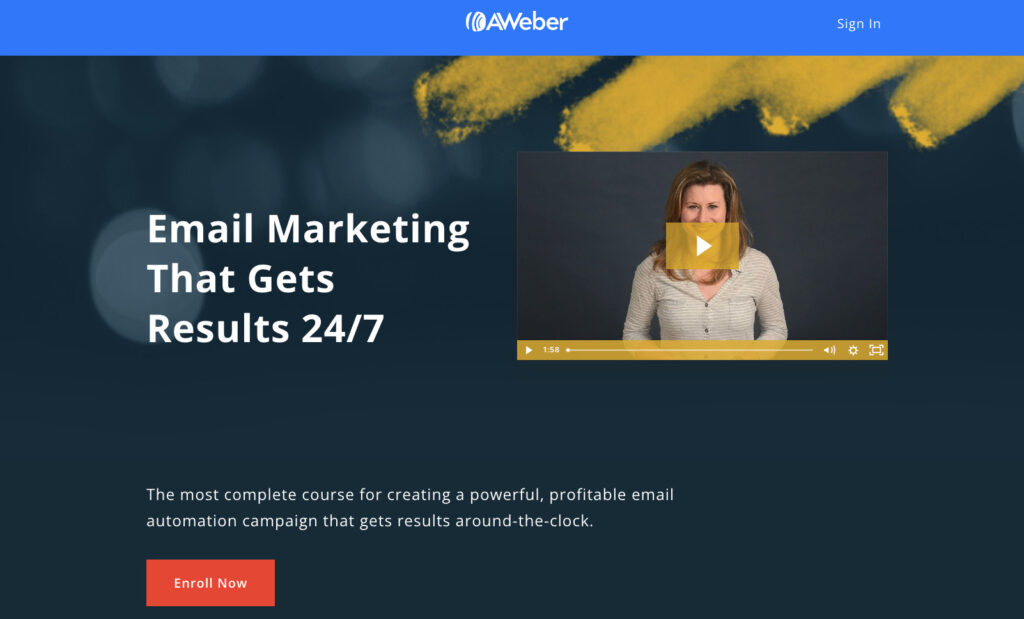
Offer a paid subscription for your blog
Today’s readers love exclusive content; many of them will even pay out of their own pockets if it means they’ll have access to content that your everyday blog readers do not.
If you have a fervent enough reader base, then, you might consider offering a paid subscription service for those who want access to an even larger and more exclusive library of content.
By implementing a paid subscription model, you can offer premium content, extra perks, and a personalized experience to subscribers. You could even offer exclusive video content, podcasts, and other downloads in exchange for their paid membership.
The nice thing about these paid subscriptions is that they can be an ongoing source of revenue for as long as you have subscribers. You can charge by the month or even offer a small discount to those who will pay up-front for a year of special content.
Start freelancing
You might want to explore some freelance opportunities after all, blogging is an in-demand skill—and many businesses are willing to pay good money to freelance writers who can deliver quality, unique, and engaging content in a timely manner.
If you’re looking to earn some additional income as a blogger, then, be sure to explore freelancing as an option. You can even post on your blog or website that you are looking for new opportunities and are willing to take on new blogging projects; from there, people can reach out to you and discuss specific terms/payment.
And of course, you have the freedom to take on as many (or as few) freelance gigs as you want. You can also set your own pricing (which, by the way, most freelance bloggers charge per word).
Many freelance bloggers will require an up-front deposit (sometimes 50% or more) before content is delivered, with the remainder to be paid after the post is published.
Create a paid newsletter
By offering a paid subscription you can provide your most dedicated readers with valuable insights, in-depth articles, behind-the-scenes access, and exclusive updates.
A paid newsletter can cover a range of topics, including industry trends, insider tips, expert advice, or premium educational resources.
You can promote your paid newsletter through their blog, social media channels, and existing email. Make sure you highlight the unique value subscribers will receive.
Try new channels you can monetize - YouTube, Podcast
You’ve already created the content, so just repurpose it on a new channel such as YouTube or with a podcast.
In today’s world, more people would rather listen to content than read it, so use that to your advantage.
At AWeber we started repurposing our newsletter content into YouTube videos and including it in that week’s newsletter. We’ve found that nearly 50% of total clicks are from the video.
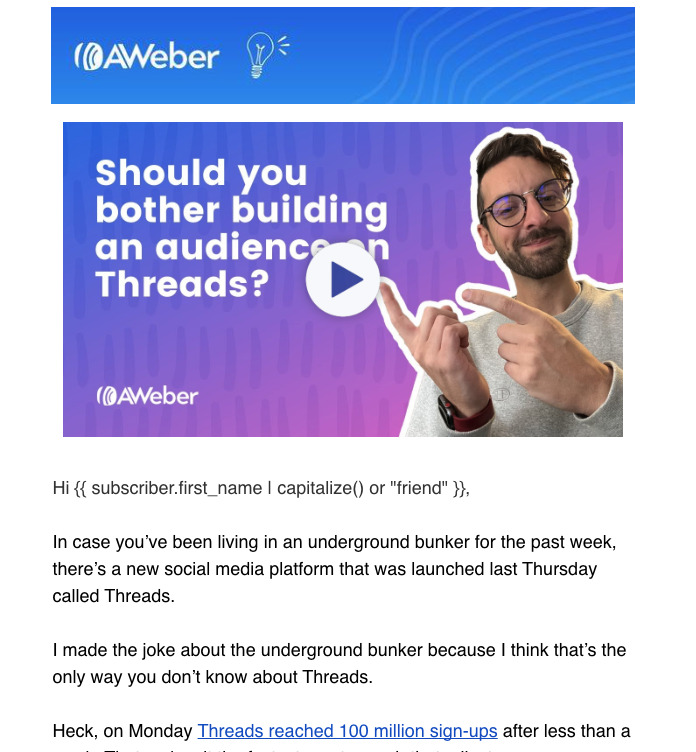
Book speaking engagements
As you build a reputation within your industry and become widely known as a thought leader through your blog, you might also be able to earn income through public appearances and speaking gigs. No matter what field your blog is in, there’s a good chance that there are annual conferences and other events that need speakers to attend.
If you can get a public speaking gig through one of these conferences (or through another opportunity), you might be surprised at how much money you can make just by speaking for 30-60 minutes on a topic you’re passionate about.
You don’t need to be a professional public speaker to make money as a presenter at conferences and other events. Don’t wait to be approached and invited to speak, though; there is nothing wrong with reaching out to event organizers directly and letting them know that you’re available to present.
How much money do bloggers make?
The amount of money you can make blogging will vary greatly, depending on a number of factors.
For example, if you’re hired to be a part- or full-time blogger for a company, then you may be offered a guaranteed salary. In this case, you can generally expect to be paid between $40,000 and $80,000 per year in this type of role.
If you’re a freelance blogger or run your own blog, then your pay may fluctuate more based on your readership and monetization methods. According to FitSmallBusiness.com, the monthly income for an independent blogger can range from a couple hundred dollars per month (for a beginning blogger) to $15,000 or more per month for an established writer.
Now start earning
As you can see, there are many ways to go about setting your blog up for success and making a profit off of your posts. From paid advertising and affiliate marketing to creating ebooks and online courses, the possibilities for your blog are truly endless.
At the end of the day, as long as you are taking the time to craft truly engaging and useful content for your reader base, you’ll have the following you need to be successful and profitable.
From there, it’s just a matter of keeping that momentum going and figuring out which monetization strategies are best suited to your needs.
Looking for more resources to monetize your blog?
AWeber has you covered with solutions you can use to publish, promote, and sell – all from a single platform.
The post Monetize your blog: 11 Easy ways to turn your passion into profit appeared first on AWeber.
from AWeber https://ift.tt/V4GUmnc
via IFTTT


![A hot pink graphic with white text that includes a quote from Jackson Alder, PFLAG National Senior Digital Strategist. The quote reads: "I think the shift [toward static] is because video was the previous trend that made people stop and engage. It's looking like it's not as much of an engagement-driver these days, so we're all just trying to find what is."](https://media.sproutsocial.com/uploads/2023/07/Question-Callout-Template.jpg)








